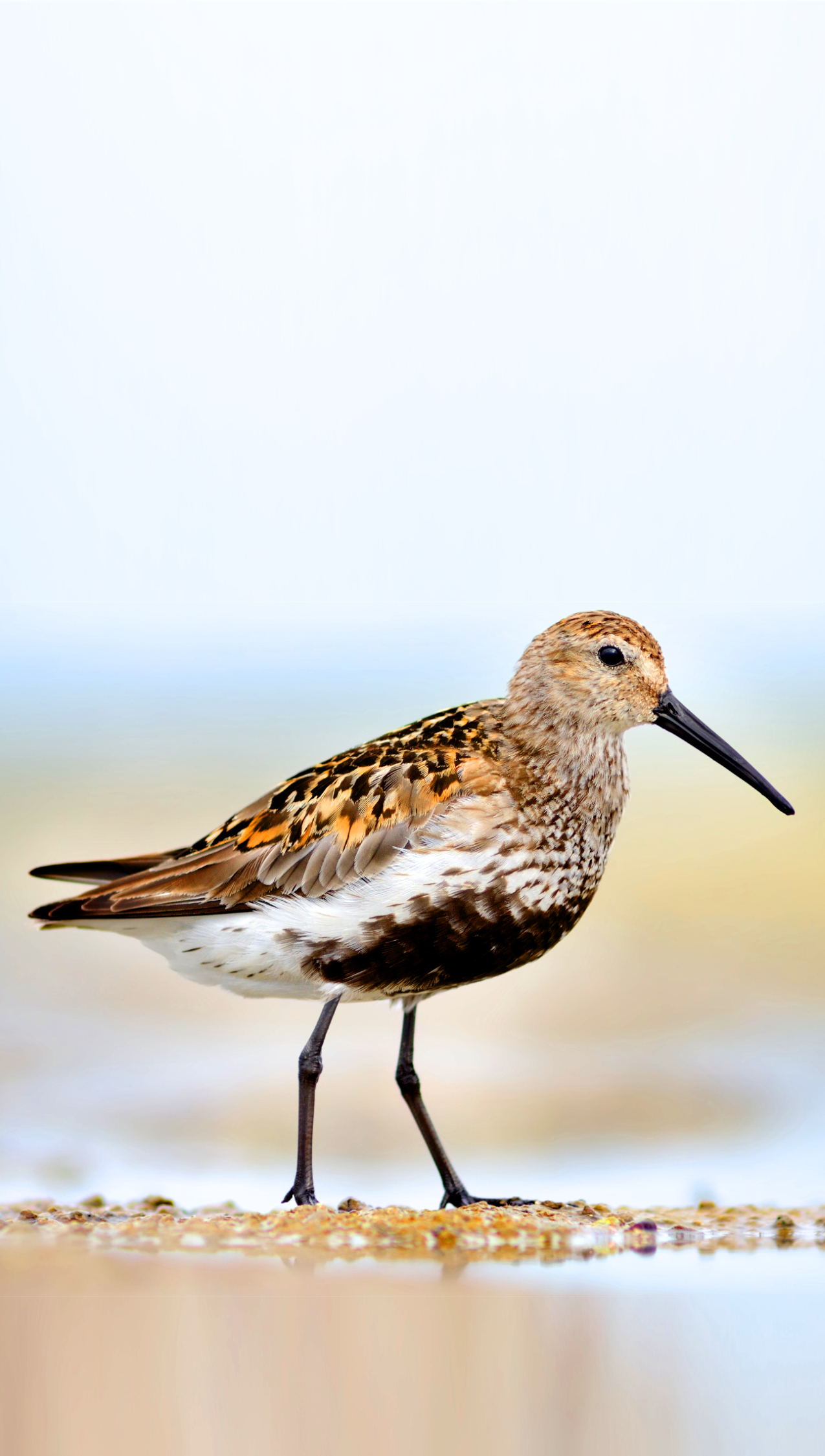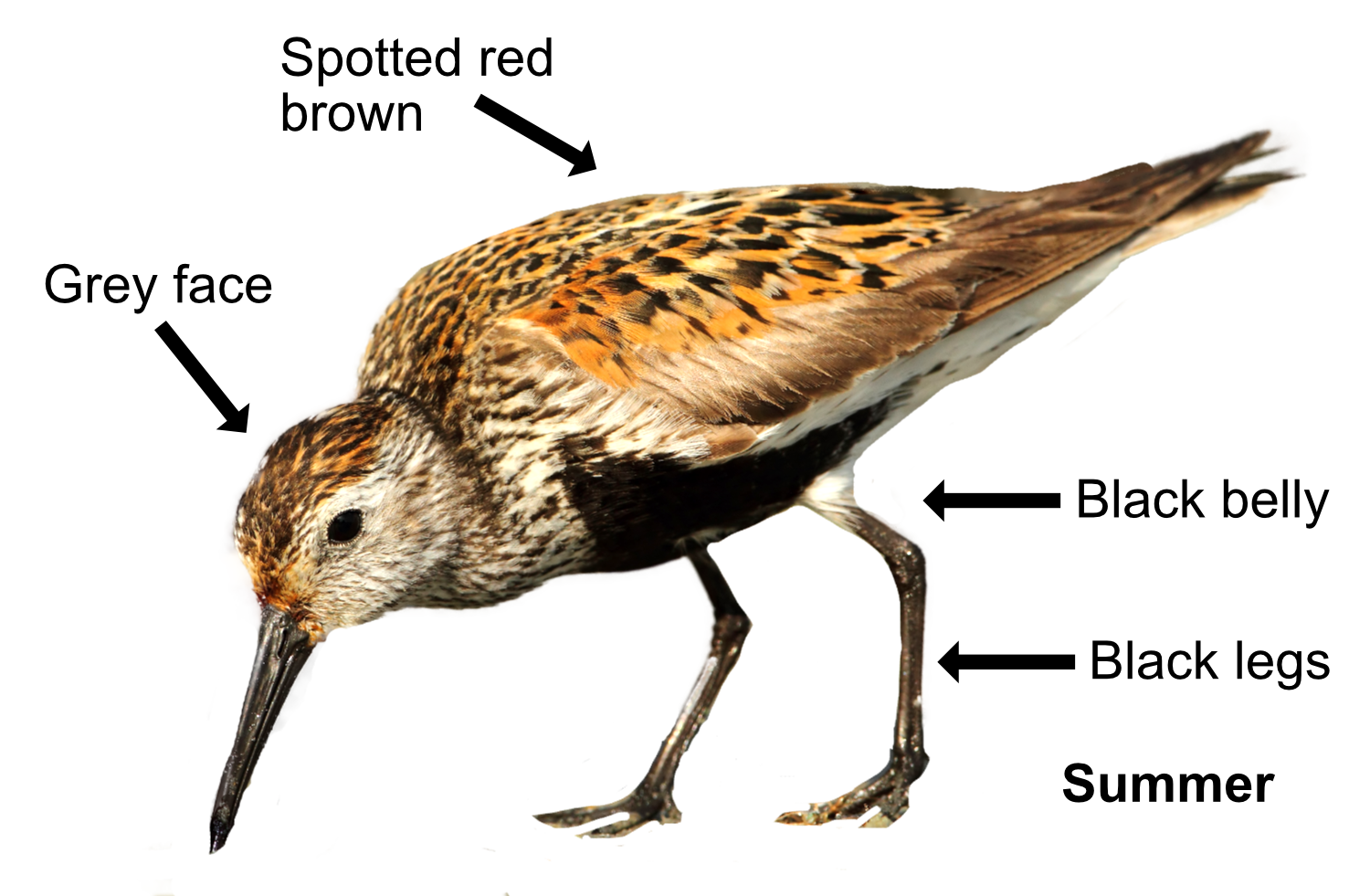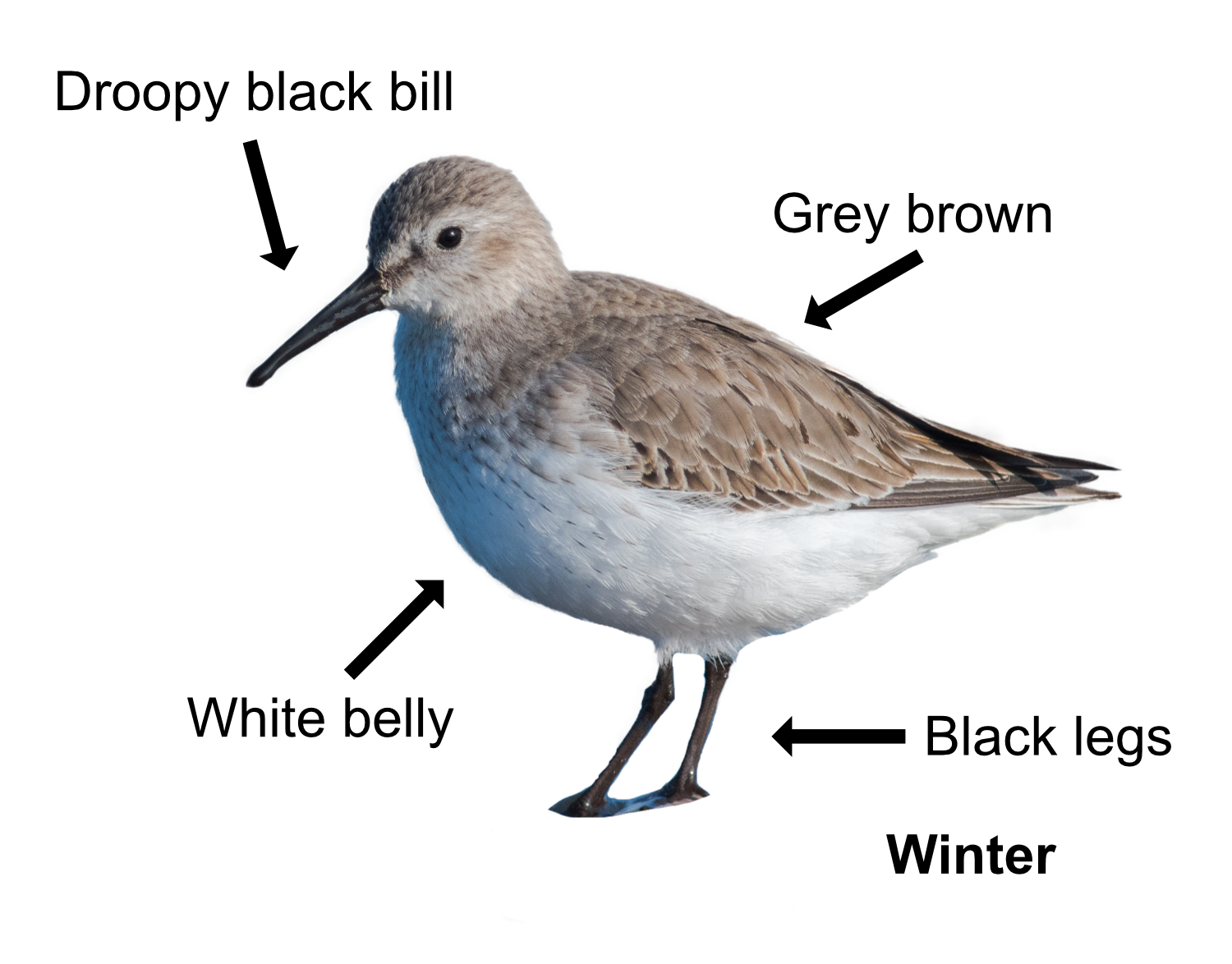
The Dunlin is our smallest common wader. Outside the breeding season, they gather in large flocks on the coast, sometimes thousands in size, and fly in compact formations showing alternate white and grey as they twist and turn.

A Dunlin is a small, plump, Starling sized bird with a droopy down-turned black bill and a short neck that makes it look round-shouldered. Apart from their black legs, they have a confusingly variable plumage. In the summer, they have a reddish-brown spotted back, grey head and neck and a noticeable black belly patch. While in the winter, they have a grey-brown back, head and neck with a white belly. In between, it can be any mixture of the two - which is why it is a good bird to learn to recognise, as this helps eliminate it from something more unusual. In flight, there is a faint white wing bar and white sides to the rump. Their call is a hoarse "zreep".
A Dunlin feeds by taking insects, such as beetles and fly larvae, crustaceans and worms from the surface of the ground by picking and probing with its bill. It usually feeds in groups, typically doing several jabbing probes before scurrying on. A 'sewing machine' feeding action.

Dunlins breed on upland moors and coastal marshes. The male puts on an aerobatic display by climbing steeply, hovering against the wind and then fluttering or gliding down to the ground with his wings held above his back in a 'V'. The shallow, simple scrape nests are lined with leaves and grass. In May, the female lays 4 eggs which hatch after 21 days. The male usually incubates during the day and the female at night. On the breeding grounds, Dunlin often mix with Golden Plovers who help give warning of danger as their ground level nests are vulnerable to predators. As soon as they hatch, the chicks can feed themselves and are independent of mum and dad. They can fly 20 days later and quickly move out to the coast.
Although some remain here all year, the Dunlin is mainly a winter migrant coming from Northern Europe and Iceland. About 10,000 pairs breed here, mainly in Scotland, and a further 350,000 arrive to overwinter here. The Dunlin is Red listed as numbers have declined dramatically, mainly because of changes in agriculture and loss of breeding moorland to forestry. The dumpy Dunlin can live for up to 19 years.
Their Latin name is 'calidris alpina' where 'calidris' is from the Ancient Greek 'kalidris' for a grey-coloured waterside bird and 'alpina' is from the Latin for 'of high mountains', in this case referring to the Alps - which they have never been near - though they do go to upland moors. The English name 'Dunlin' comes from 'dun' for dull brown, so dull brown-ish. A little more accurate.